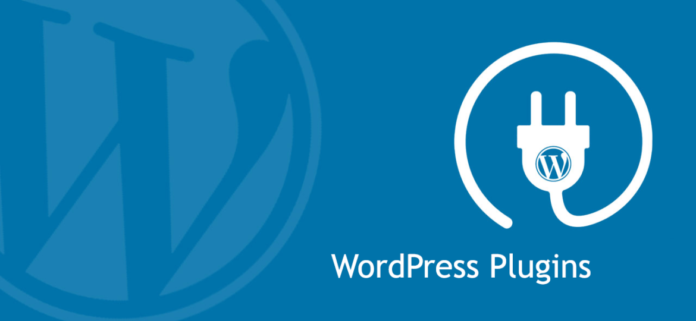WordPress is one of the most popular website-building platforms, and one of its biggest strengths is its wide range of plugins. Plugins help you add features and functionality to your website without needing to know how to code. Whether you need a contact form, SEO tools, or an e-commerce system, there is a plugin for almost everything.
However, with thousands of plugins available, choosing the right ones can be difficult. Installing too many plugins can slow down your website, while choosing the wrong ones may cause security issues. In this guide, we will explain how to pick the best WordPress plugins for your website.
1. Identify Your Needs
Before you start looking for plugins, think about what features your website requires. Do you need an SEO tool? A contact form? Social media integration? If you are unsure, make a list of the essential features you want to add. This will help you avoid installing unnecessary plugins that may slow down your website.
For example, if you are running an e-commerce site, you will need a plugin like WooCommerce. If you run a blog, an SEO plugin like Yoast SEO will be useful. A professional WordPress Web Design Company Udaipur can also help you identify the best plugins based on your website’s goals.
2. Choose Plugins from Reliable Sources
Always download plugins from trusted sources like the official WordPress plugin directory, reputable developers, or well-known marketplaces like CodeCanyon. Avoid using plugins from unknown websites, as they might contain malware or security vulnerabilities.
Checking user reviews, ratings, and active installations is another good way to verify a plugin’s quality. A plugin with high ratings and many active users is likely to be safe and reliable.
3. Check for Regular Updates
A good WordPress plugin is updated regularly to keep up with the latest WordPress versions and security updates. If a plugin has not been updated in a long time, it may not work properly and could create security risks.
Before installing a plugin, check the last updated date on the WordPress plugin page. Ideally, a plugin should be updated at least every few months. If a plugin has not been updated for more than a year, it may not be a good choice.
4. Look for Compatibility with Your Theme and Other Plugins
Some plugins may not work well with your WordPress theme or other installed plugins. This can cause errors or slow down your website. To avoid compatibility issues, check the plugin’s compatibility information on the WordPress plugin page.
If you are unsure, you can test the plugin on a staging site before installing it on your live website. This way, you can see if there are any issues without affecting your actual website. A professional Web Design Company In Udaipur can also help test plugins to ensure compatibility.
5. Check Plugin Performance and Speed
Some plugins can slow down your website, especially if they use too many resources. A slow website can harm your SEO and drive visitors away. To check a plugin’s impact on your website’s speed, you can use tools like GTmetrix or Google PageSpeed Insights.
If a plugin significantly slows down your website, consider finding a lighter alternative or removing unnecessary features. You should always prioritize speed and performance when selecting plugins.
6. Security and Support
Security is one of the most important factors when choosing a plugin. A poorly coded plugin can create security vulnerabilities that hackers can exploit. To ensure security, always choose plugins that are well-maintained and have positive reviews.
Additionally, check if the plugin developer provides support and documentation. Good support means that if you face any issues, you can get help quickly. Some plugins offer free support through WordPress forums, while premium plugins often come with dedicated customer support.
7. Free vs. Paid Plugins
Many WordPress plugins are free, but some come with premium versions that offer additional features. Before purchasing a paid plugin, check if the free version meets your needs.
Premium plugins often include better support, frequent updates, and advanced features. If your website requires extra functionality, investing in a good paid plugin can be worth it. If you need help choosing between free and premium plugins, a company like Udaipur Web Designer can guide you.
8. Limit the Number of Plugins
Installing too many plugins can slow down your website, increase security risks, and cause conflicts. It is best to keep the number of plugins to a minimum and only install those that are essential.
If you have multiple plugins performing similar functions, remove the unnecessary ones. Regularly review your installed plugins and delete any that are no longer needed.
9. Read Plugin Documentation
Before installing a plugin, read its documentation and FAQs. This will help you understand how it works, how to set it up, and whether it meets your needs. Many well-developed plugins have step-by-step guides and video tutorials that make it easier to use them.
10. Test Before Installing on a Live Website
Before installing a plugin on your live website, it is a good idea to test it in a staging environment. This is a copy of your website where you can test plugins without affecting your actual site.
A staging environment helps you check if the plugin works well with your website and if it causes any issues. Many WordPress Web Design Company Udaipur experts recommend testing plugins before making them live.
Conclusion
Choosing the right WordPress plugins is important for website performance, security, and user experience. Always install plugins from trusted sources, check for regular updates, and ensure they are compatible with your theme. Limit the number of plugins to keep your website fast and secure.
If you need expert guidance, a professional Web Design Company In Udaipur or Udaipur Web Designer can help you select and install the best plugins for your website. By following these steps, you can enhance your WordPress website while keeping it safe and efficient.



